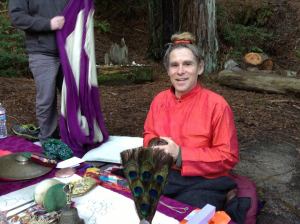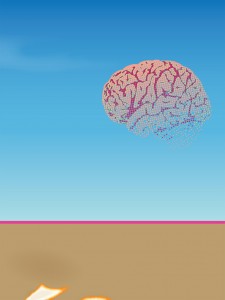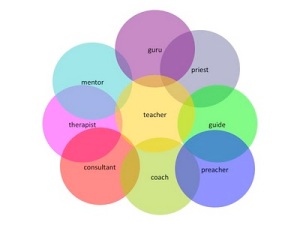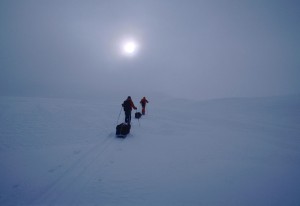Vol. II, This Changes My Family and My Life Forever, The Spanners Series, by Sally Ember, Ed.D.
Cover and logo art by Willowraven.
14th Serialized Excerpt, 4/4/14
CHAPTER INTERLUDE TWO
Chief of the Psi-Warriors, OverSeer and covert special Operations agents, Moran Ackerman:
My Stories of the Transition
(continued)
I am re-reading the description of Level 3. Burns? Frostbite? Deep wounds? What??? I ‘path Aunt Clara: “I can’t do this. I’m not cut out for pain. Get someone else. I can quit, can’t I?”
Aunt Clara knows where I am and says she’s coming to see me, ‘pathing, sternly while she is on her way over, “That’s more than one. You are now in arrears for three days of kvetches, Moran. Want to go for four?”
I look up at the end of her remonstration to see her standing in front of me. How does she get here so fast?
“No, Aunt Clara. I’m serious.” I say, aloud, wincing at the sound of my own whining, but I am somehow compelled. “I can’t do this. I’m a baby. Truly. Liora can tell you. Agam and Lavi can tell you. Hell, Orna can tell you: I’m a wimp. Really. I get teary when I get a paper cut.” I wave one finger around, demonstrating the way it makes me feel, wiping pretend tears away with my other hand.
She is unmoved.
Led appears *POP* and hovers over to me. “What seems to be the problem, here, Moran Ackerman?”
Just Led’s appearing and calling me by my full name makes me stand up straighter, suck in my gut and pull it together. “Nothing, Sir. I mean, Led. I mean, I’m fine. Just having a moment with my aunt.”
Led hovers over to Clara. They exchange some information silently.
I don’t catch it, which I’m sure is intentional on their part.
Aunt Clara turns to me, “Moran, we think it’s best if you and don’t see each other so often for a while. Somehow you allow yourself to feel weaker or show your doubts more around me, which is not helpful to you or to your training. Probably a family thing.”
I take that in, feeling as if she’s punched me in the stomach. Not see her? She’s my only family here, most of the time. I am hit with a wave of homesickness and despair. I sit there, feeling it, then look up at her.
“You’re right. I see that, now. I agree.” I have no idea where this type of inner strength and brutal honesty come from, but the correctness of this plan permeates me completely.
“I hate it, so it must be right.” I grudgingly agree.
I give Aunt Clara a rueful smile: this formula is well known to meditators, personal growth mavens and therapists. She and I face this paradox often. Our strongest resistance and fears are sparked when we face exactly what our next steps have to be. Certain kinds of “no” actually mean “absolutely yes” when we’re talking to ourselves.
Aunt Clara steps toward me and envelops me in a very loving, long hug. “I’m so proud of you, Moran. You are perfectly suited for this. We are sure.”
I appreciate her hug and even more, her confidence in me. “Thanks, CeeCee. I won’t let you down.”
Led says, “No, you won’t, Moran Ackerman. You lead Earthers quite well.”
“Okay, then. Let’s get this party started,” I say.
Smiling, excited and filled with stomach-sucking dread, I turn away from them to walk into the Level 3 classroom.
******
I start to feel very rushed during these next trainings because things are heating up “outside.” More Fraggers are becoming Trenchers,which means the kvetchers [outspoken complainers, Yiddish] are becoming a politically organized resistance movement, no longer content with venting.
Trenchers are organizing to protest Earth’s membership in the MWC, to “throw off the yoke of alien invasion by any means necessary,” according to their websites. I feel quite worried and accelerate my practice sessions. I don’t timult, yet, but I can sense the impending conflicts, nonetheless.
Led tells me that this is all “typical.”
But I am increasingly worried because Mick shows me, via Access, that many orbs have psi Wars during their Ts. I ask them how the Trenchers learn anything like my lessons in psi from ESP training when none of them is included?
One day, Led explains.
Aunt Clara and I are called in via vid call to speak together with The Band in April, 2013. I remember it vividly because this is the first time I hear that I am supposed to not only become one of but to lead the Psi-Warriors. The most I lead up to that point is my class of twenty 7th-graders!
*******
“I am in no way suited for such a difficult role and unimaginable amount of responsibility! Please, find someone better! I’m merely a beginner. Surely you have someone with psi talent and training you can use from off-p?” I am kind of shouting, but who wouldn’t?
“Can’t I assume leadership later, like, in about five years or something? You have all these experienced OSes here. Can’t we use one or more of them? I feel intense internal opposition about becoming something I’m not. Worse, I would be having all these people, all these beings—the entire damned planet—depending on me. This can’t be right.” I’m beginning to feel lightheaded from hyperventilating. I take several deep, slow, calming breaths.
Led intones: “The leader of each Member’s Psi-Warriors, when one is needed, must be of the dominant species from that orb. Furthermore, s/he must be a close relative of the CC. We try many other variations and none is as effective. Name recognition, early acceptance of unusual traits and Excellent Skills, close contact and guidance from the MWC: these are all important to the success of the leader of the Transition OverSeers’ defense squadron.”
Why isn’t this Zephyr’s role? Why isn’t he being trained to lead the PWs and OSes?
Before I can voice these questions, Led interrupts.
“In addition,” Led inserts, “anyone who actually wants this job, who feels comfortable assuming this kind of leadership role, is prohibited from attaining it.”
Realization dawns slowly, but I get it, now. “Oh. It’s just like what’s happening with all the new global government leaders: everyone who volunteers, who runs for election or wants to be in charge, is refused. Anyone competent and good-hearted who could be leaders are the ones who are invited and trained.”
Led bounces in his YES mode.
Aunt Clara chimes in to reassure me: “You are supervised in Access contact and telepathically engaged at all times, same as I am. You will never be ‘alone,’ as you conceive of it, ever again. You don’t even have to send a ‘Bat signal’ to get help!”
I take a moment to let that sink in. Never alone again?
Now, I’m used to it. But, then, it’s a shocking concept.
I look at Aunt Clara, who is looking at me with sympathy and understanding. Oh. I get it. She’s already like that, with the MWC. Always in contact, whether she likes it or not. Her life must seem to be out of her control.
Mine is about to become eerily similar. Tell me again why this isn’t this a job for Zef?
Hearing me, Ringo cuts in. “Your cousin, Zephyr, has other roles to play in the Transition and is already engaged in them. Furthermore, experience shows us that the Psi-Warrior leader cannot be a member of the CC’s immediate family because that causes the CC to be too distracted to perform the CC duties during psi conflicts.”
Battles. Fights. People and ETs with some weird-ass weapons I can’t imagine, yet, killing and hurting each other. A war. I can’t lead a war! I’m a rabbi, a middle-school teacher!
I start to object, but again, I am not fast enough.
Led seems as if he’s trying to reassuring, here: “You receive specialized, accelerated ESP training already. We add, today, your specialized InKC [pronounced InKayCee], your Inner Knowing Center, Access training. InKC gives you some measure of privacy.”
Mick adds,”More importantly, InKC Access also enhances your ability to connect directly with everything you learn, know, and are capable of at every moment as circumstances demand without having to make an Access request.”
Aunt Clara chimes in: “InKC is great. I believe it’s saved what sanity I can claim to have. For most ESP trainees, it’s Level 8-A, but for us, it’s NOW.”
I am not even close to being sufficiently reassured.
We are all quiet for a few moments.
This is too weird, even after everything I already know.
Hearing my internal distress, again, Ringo intercedes by reminding me: “Isn’t there a great tradition of Jewish scholar-fighters?”
I nod. I breathe that in. This is HaShem’s will for me. I nod to acquiesce, with quite a bit of trepidation. Even Noah is afraid, but he builds the Ark.
I finally find my voice. “How does InKC training work?” I realize I am sidestepping my misgivings, but I can’t talk about them all, yet.
“We now show you,” Led says, somewhat gently, for him.
I look to Aunt Clara. She is already getting into meditation posture on her chair.
I mimic her, but on the cushion I use on the rug. Without further prompting, I begin the deep breathing and calming exercises that precede all ESP training sessions.
Within a few minutes, I feel the familiar heat in each of my energy centers, especially in my heart chakra [energy center, Sanskrit]. I continue breathing, eyes half-closed, turning my mind to focus on my breath. In, out, in, out.
I feel the tingle that signals a lesson is beginning. I always feel it first in my hands. Aunt Clara tells me another time she feels it first on the back of her neck.
I hear Mick’s voice, in my mind, directing us: “Allow your attention to flow through all of your energy channels evenly and without constraint. Keep the breathing steady. Release the bonds of the outer shell and join in oneness.”
Time and space expand as the multiverse timelines converge, separate, reconverge, merging into one. I no longer feel my limbs, my skin, my weight. My sense of the room I’m in fades as well. So far, all very familiar and somewhat, well, blissful. I should do this more.
Mick continues, still ‘pathing: “Now, increase the pressure from within your heart energy center so that you are expanding its presence in your chest. Let it fill the entire cavity.”
This is new. How do I do that? Suddenly my chest fills with sparkling, buzzing electricity. Energy is also zinging up and down all of my central and auxiliary channels with more speed and heat. Whoa, there, Sparky! I slow it down a little, but keep it strong by directing my attention to it, pushing the current while harnessing it at the same time.
Mick’s voice resumes in my mind: “Refocus your attention back to the center of your heart energy. Breathe into it. Consider that it is a kind of doorway. Visualize it, seek its opening and enter through that door. You will find yourself in a chamber of your own design, outfitted exactly as you need, each time you enter. Here, you are safe, fully knowledgeable, reconstituted and restored as needed. Find your resting place, your refueling station. All your information Access points are also within this chamber.”
Wow. This is so cool! My chamber is kind of like an Israeli Talmudic library and study room that also has a large couch, a small table with water and food, soft lighting, complete silence. Pictures of Liora and Orna are on the shelves.
I immediately feel happy, safe, at home. I want to come here frequently. I want to stay here.
Again, hearing me, Led responds. “Now that you establish your InKC, make this journey at least once per day exactly as we just have. Familiarity is the key.”
“Does the InKC change each time I visit?” I ask aloud. “You say something about the chamber’s changing each time we come. How does that work?”
Led makes the bubble sound that I recognize as laughter and also speaks aloud: “It’s all in your mind, Moran. Of course it can change, instantly.”
Oh. Right. I return my attention to the chamber and push the energy to make a tablet computer appear on the table. Snap. There it is. Immediately. “Sweet. I can use this!” I say, happily.
******
During the rest of the Level 3 ESP training and all my previous Levels’ practice sessions, I come to my InKC often, more than once a day. I find I heal faster, learn more quickly, feel refreshed sooner and remember lessons more reliably with many visits. I understand better each week the reason for its name.
It takes many months for me to get good enough at ES Levels 1, 2 and 3 and Health/Healing [8-B] since these are fundamental. Meanwhile, using my InKC becomes automatic and essential.
“Outside,” things are getting crazy in Trencher-ville, spawning the Psi-Defiers at the end of the summer, 2013. My training really speeds up after that.
More OSes come every week to be part of our PWs from all over the MWC membership. I get to train with each of them, individually and in groups. They know before arriving that I am going to lead us as soon as I’m ready, so they all pitch in to encourage, test, demo, model: they are amazing.
I’m not at liberty to say much more about the exact training I get, but I’ll share what I can with a story here and there.
*********************************
Stay tuned on Sally’s blogs on WordPress (which has all links) and Tumblr, and on The Spanners Series‘ pages on Facebook and Google+, for each of the upcoming Excerpts from Volume II from March 16 – April 18, about one/day.
4/18/14, Volume II becomes available for Pre-orders via Smashwords, Kobo, iBooks and nook for half-price: @$1.99, through June 8, 2014.
On 6/9/14, Vol. II goes LIVE everywhere ebooks are sold for $3.99.
#THESPANNERSSERIES #THISCHANGESMYFAMILYANDMYLIFEFOREVER #THISCHANGESEVERYTHING
Share this: CounterSocial





















































































You must be logged in to post a comment.